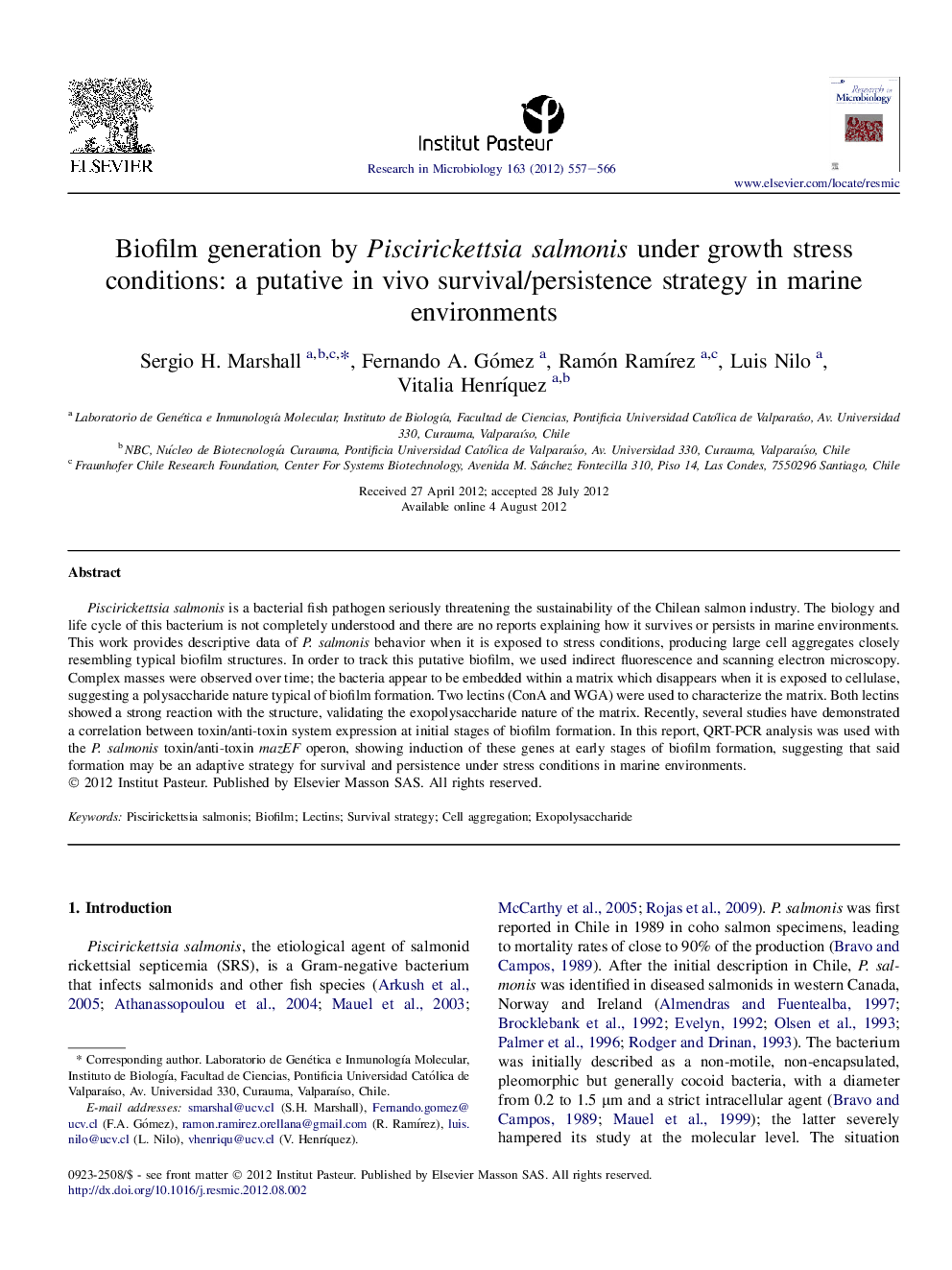| Article ID | Journal | Published Year | Pages | File Type |
|---|---|---|---|---|
| 4358657 | Research in Microbiology | 2012 | 10 Pages |
Piscirickettsia salmonis is a bacterial fish pathogen seriously threatening the sustainability of the Chilean salmon industry. The biology and life cycle of this bacterium is not completely understood and there are no reports explaining how it survives or persists in marine environments. This work provides descriptive data of P. salmonis behavior when it is exposed to stress conditions, producing large cell aggregates closely resembling typical biofilm structures. In order to track this putative biofilm, we used indirect fluorescence and scanning electron microscopy. Complex masses were observed over time; the bacteria appear to be embedded within a matrix which disappears when it is exposed to cellulase, suggesting a polysaccharide nature typical of biofilm formation. Two lectins (ConA and WGA) were used to characterize the matrix. Both lectins showed a strong reaction with the structure, validating the exopolysaccharide nature of the matrix. Recently, several studies have demonstrated a correlation between toxin/anti-toxin system expression at initial stages of biofilm formation. In this report, QRT-PCR analysis was used with the P. salmonis toxin/anti-toxin mazEF operon, showing induction of these genes at early stages of biofilm formation, suggesting that said formation may be an adaptive strategy for survival and persistence under stress conditions in marine environments.
